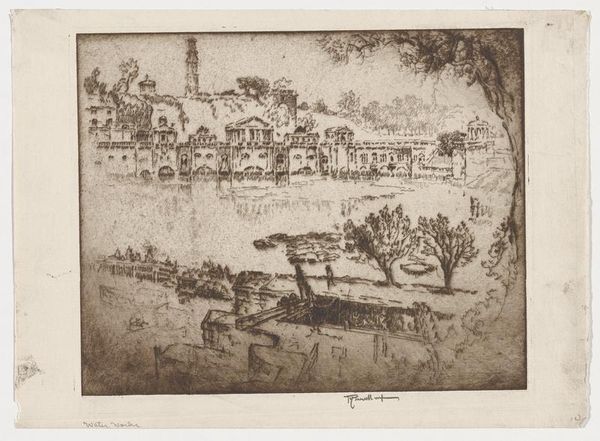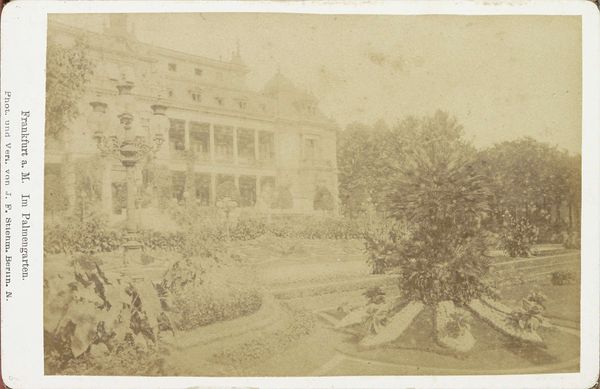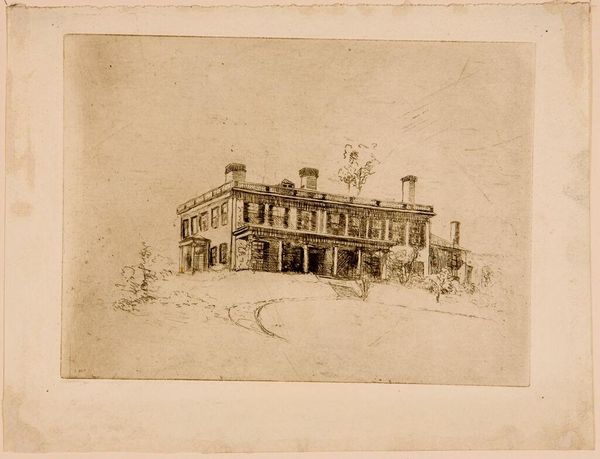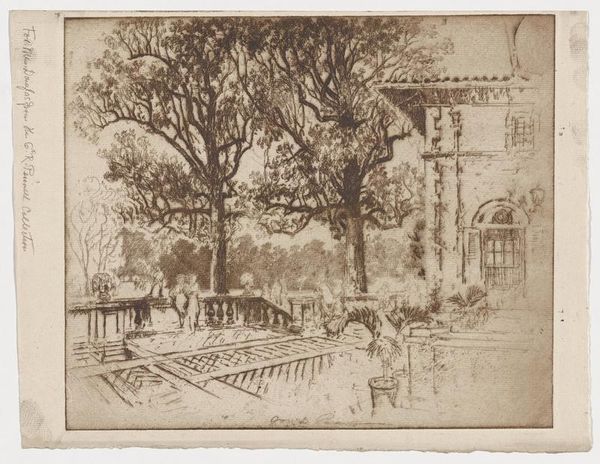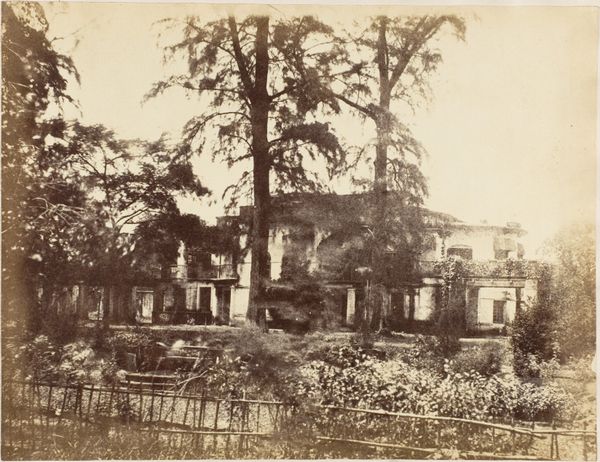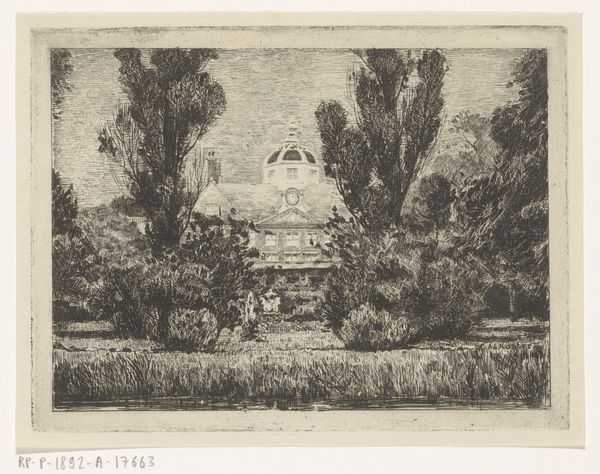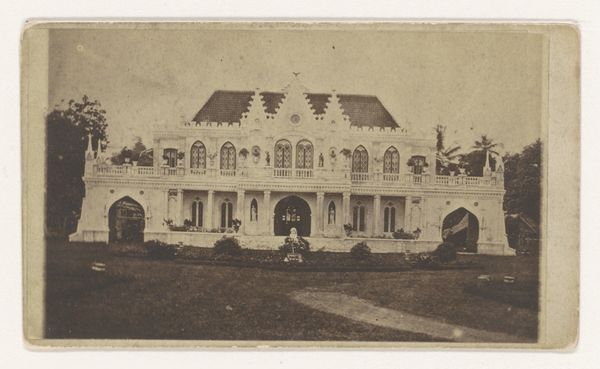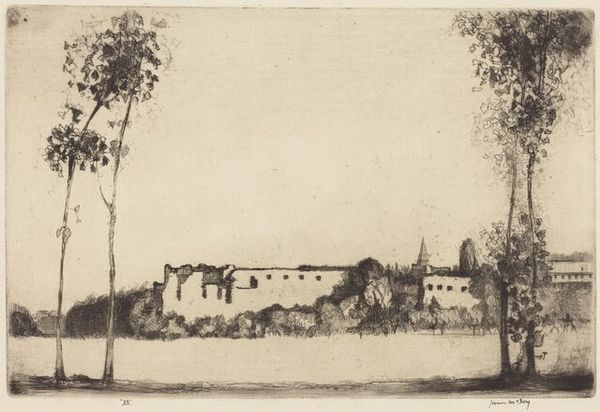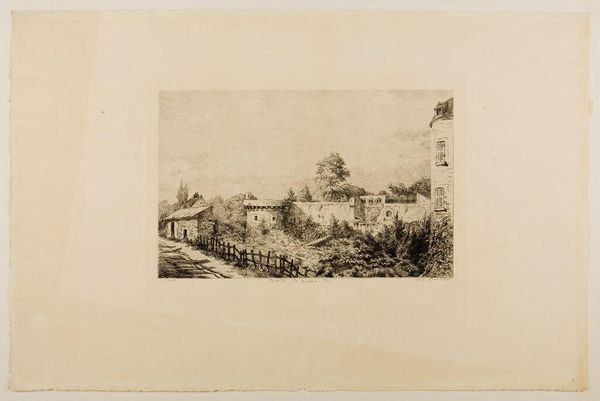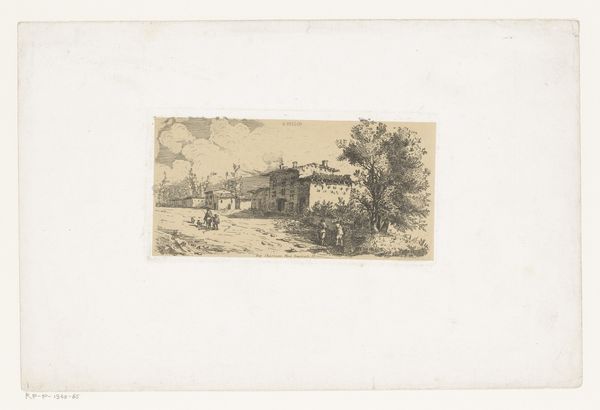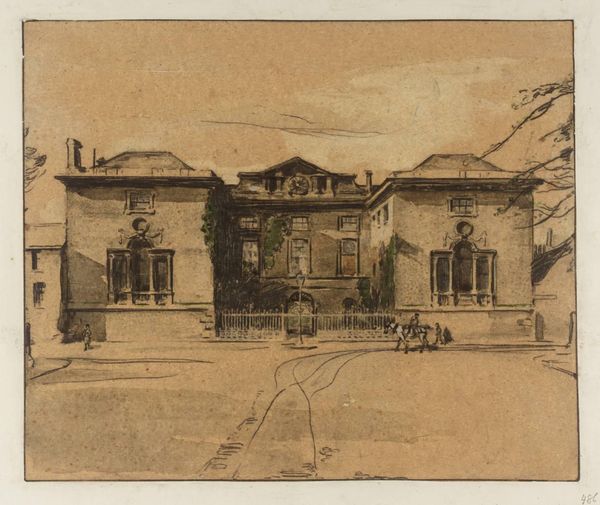
Dimensions: 9 15/16 x 11 3/4 in. (25.24 x 29.85 cm) (plate)10 11/16 x 13 5/8 in. (27.15 x 34.61 cm) (sheet)
Copyright: No Copyright - United States
Curator: Gazing at this print, “Sogno Mio,” which translates to "My Dream," by Joseph Pennell, likely created around 1919 or 1920, what feelings stir within you? Editor: Initially, a sense of faded grandeur. It's sepia-toned, blurry, and somewhat melancholic. Is it me, or do these Italianate buildings always give off a wistful air? Curator: Perhaps it's the impressionistic technique, those suggestive, fleeting lines that evoke memory and longing. Pennell, as an artist, was always chasing that elusive emotion. He even spent some time rendering the architecture on different continents and then reflecting, it all went back to memory, to something never touched yet truly felt. Editor: I can see how the etching embodies memory and an imagined sense of history. With all that blurring, the etching, like the dream of a manicured garden party in front of an old country estate, might evoke a certain privileged class gazing in on their past as well, or the present through the mists of denial, or from an "us" perspective of outsiders dreaming what it would be like to be inside that house with that history and those privileges. Curator: That is interesting to bring forward. Etchings certainly have a historical charge being easily replicated. These are interesting considerations. Editor: Etching became, like photography and film, technologies for capturing the here-and-now, even as the subjects of representation changed. I wonder, how did the democratization of imagery influence the concept of home? "Home" is no longer just bricks and mortar; it's this projected image of ourselves and our heritage. Curator: Perhaps the essence of a 'dream,' captured through lines in acid and ink on metal, reflects that very human yearning to build and also belong—but in an era undergoing monumental transformations. It's beautiful that something made with architecture at the fore becomes even more poignant on introspection, it’s both built and built upon. Editor: Looking at it this way, I will say it all feels a bit like the “Gatsby effect”: always chasing a future informed by the past. It is this interplay of materials, eras and memories. What about you, any parting thoughts? Curator: Yes, thank you for joining me in today’s discussion of “Sogno Mio.” I will have to say I do consider the dream alive! It shows that the most potent art comes to us as something personally found, as though in an attic of curiosities we find its dream as our own, in some little way.
Comments
No comments
Be the first to comment and join the conversation on the ultimate creative platform.
